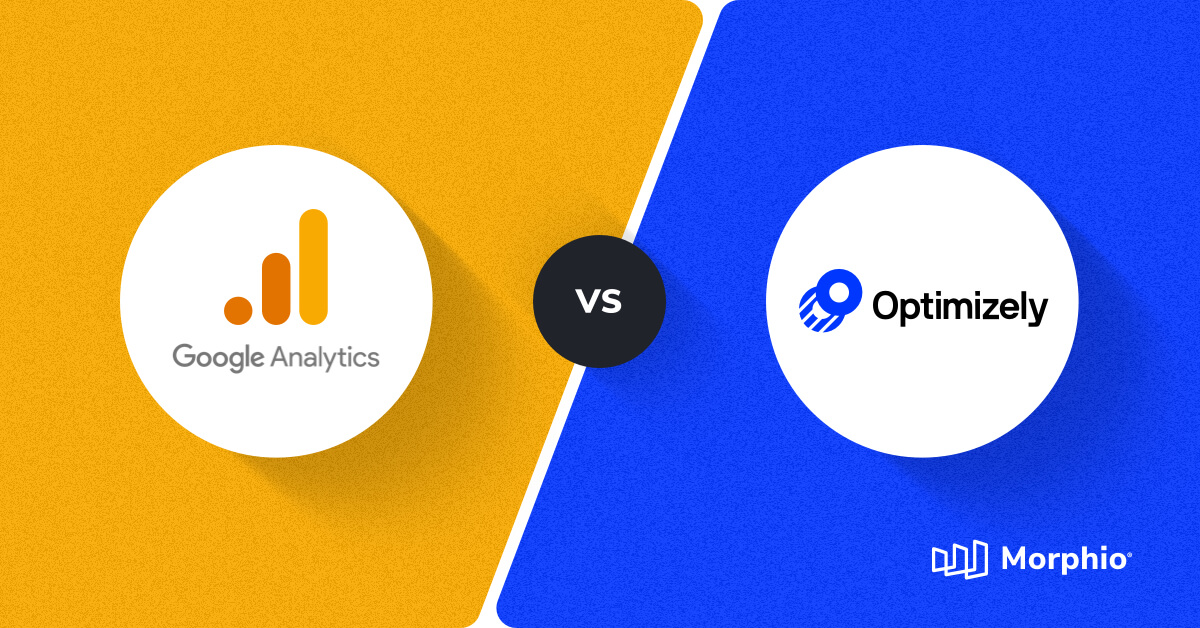
53% of companies use analytics and big data. Do you?
Analyzing business through data can have a great ROI, but boy it comes with a lot of headaches.
What metrics should you measure? How do you interpret data? These are some of the millions of questions marketers have.
It’s daunting.
However, it doesn’t have to be that way.
There are tools that generate reports, suggestions, and make the most out of a company’s data so it isn’t collecting dust.
Two of the best analytics platforms that do this include Google Analytics 360 and Optimizely.
Think of 360 as the standard Google Analytics but with a Ferrari engine. It was originally called Google Analytics Premium and offers enterprise-level performance.
Optimizely, on the other hand, is a platform for conducting comprehensive experiments, A/B split testing, and interpreting data.
Which is better? What is more suitable for your goals? Keep reading to find out.
Start Defending Against Marketing Failures Today!
Discover why over a 1000 businesses trust Hawke AI to help protect their marketing ROI.
Request a free trialGoogle Analytics 360 pros
If you took Google Analytics and gave it steroids, you’d create Google Analytics 360.
It helps marketers understand how their customers and properties are behaving to increase performance, UX, and sales.
But, what’s so good about it?
Google Analytics 360 provides automatic insights into key changes to data and trends that allow teams to take immediate action. Machine learning backs some of the features like Smart Goals and Smart Lists to improve conversions, too.
Here’s what a customer said about Analytics 360 on TrustRadius:
They vouch for the improved decision making and customer targeting it’s helped their organization achieve.
Next, the reporting. The reports are easy to understand while offering comprehensive data that can be easily shared to everyone on your team. This keeps everyone in the loop.
Data can be filtered and manipulated with advanced filters, groupings, and connected apps to maximize usage and customization.
There are reports on:
- Audiences
- Advertising
- Acquisition
- Behavior
- Conversions
- Real-time data
- User flow
- Data freshness
- Unsampled reports
- Roll-up reporting (Multiple analytics properties in one report)
Email alerts and the official mobile app allows your team to take data on the go, as well. You don’t have to be glued to a desktop anymore.
Additionally, there are helpful integrations including Google Cloud, BigQuery, Salesforce Sales Cloud, and Salesforce Marketing Cloud. These add to the capabilities of Analytics 360 and the impact it will have on company performance.
Rituals Cosmetics, a retailer from Amsterdam, used Google Analytics 360 to boost sales by 85%! This is what the digital director had to say:
So, yes. It works and there’s plenty of case studies on how it transformed brands growth.
But, I’d like to talk about some of the drawbacks next.
Google Analytics 360 cons
It’s an incredible tool, but like most, it has some disadvantages that need to be noted before you make a purchasing decision.
The first being the price.
It comes in at a whopping $150,000/year subscription that’s enough to make most CFO’s faint.
So, it’s ideal for enterprises and large companies that have an appropriate budget and values their data enough to bite the big price tag. In fact, that’s one of the most common complaints across all TrustRadius reviews.
Secondly, it’s not a simple tool to understand. You’re not going to plug-and-play this beast. It will require serious training and a long time to get used to, understand, and ultimately master.
You and your team will have to spend time adopting it before it’s ROI becomes apparent. While there is some initial training that Google offers, you will still need to learn all of the nooks and crannies.
Next, let’s talk about the other competitor in the ring: Optimizely.
Optimizely pros
Experimenting and testing is a guaranteed way to find the highest ROI assets to invest in. Otherwise, you may never discover new ways to generate revenue.
Optimizely prevents that.
It gives you all of the resources to conduct thorough experiments on UX, UI, and more.
You can use their no-code visual editor to make UI variations for:
- Websites
- Apps
- Forms
- Messaging
- Imagery
- TV apps
- IOT apps
- More
There are also solutions for individual departments and industries as you can see here:
These become tailored to specific needs versus Google Analytics 360 which is more general.
There are two main products they offer, as well: Web and Full Stack.
The first is much simpler, offering personalization and experimenting features. The latter offers much more in-depth testing, experimentation, and data.
Users can add custom metrics and take advantage of Optimizely’s machine learning capabilities to continually use their data more intelligently and make better business decisions.
Their platforms also integrate with other analytics tools to maximize the amount of information received about campaigns and their return.
In fact, Alaska Airlines used Optimizely to increase its Mileage Plan signups by an impressive 18% thanks to what I just described.
There are three plans you can currently choose from: Essentials, Business, and Enterprise.
Each comes with increasing features and capabilities. However, you must consult with their team to receive a quote.
According to Capterra, Optimizely starts at $50,000 per year which is significantly less than its competitor.
I’d like to touch on some of the disadvantages to Optimizely next.
Optimizely cons
One of the first drawbacks of Optimizely compared to Google Analytics 360 is the amount and richness of data.
Marketers will no doubt have enough fundamental data to make better decisions, but these mostly come from experimentation. Which, by the way, is where Optimizely shines.
Nonetheless, companies in need of much larger datasets and reports will want to rely on Google Analytics 360 because that’s what it’s designed for.
According to a TrustRadius review, some common Optimizely issues are page speed reduction, lack of notifications, and broken integrations.
All in all, it’s engineered to help brands conduct experiments to discover profitable assets and variations, but lacks in the data department.
The verdict
Google Analytics 360 and Optimizely are two similar but very different tools. You don’t want to purchase one and realize you need the other.
Google Analytics 360 is ideal for enterprises and large companies that can afford the $150,000 price tag. Furthermore, it’s for those who require the most in-depth data analysis tool available today.
Optimizely, on the other hand, is $100,000 less—making it better for bootstrapping businesses. Additionally, it’s designed for testing and experimenting to find winning combinations of creatives, design, etc. Not big data.
You could spend $50,000–150,000 per year to get the features I’ve covered today. Or, you could try Morphio today for free and see how our marketing security platform offers similar (and better) features for a fraction of the price.
